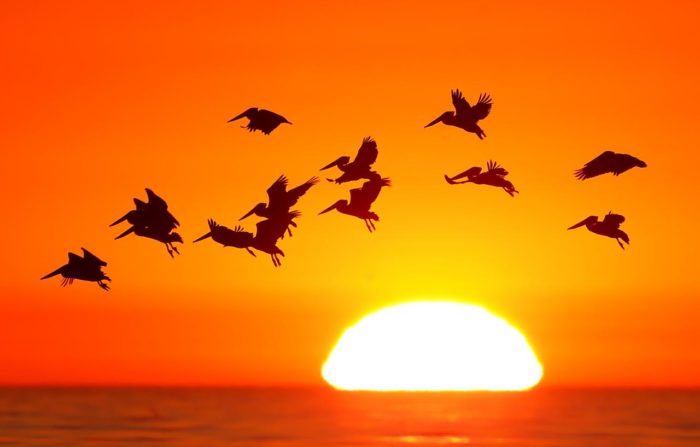
The birds left their home region of Siberia in October and are now returning after a five-month-long journey spent in different natural waterways in Punjab, including dams and lakes.
However, a matter of concern is that due to the climate crisis, water pollution and rise in hunting patterns, the number of these migratory birds is decreasing significantly.
Flocks of refugee birds are returning to their native extremely cold regions of Russia and North and Central Asia.
These birds include painted snipe, bustard, painted crane, Siberian crane, northern pintail, shelduck, MacQueen’s bustard, bar-headed goose, Eurasian collared dove and countless other species. These charming birds were living at the Ramsar wetland sites from where they are now returning.
Ramsar sites are usually areas near waterfalls where 20,000 or more migratory birds live at a time. There are 20 seasonal places for migratory birds in the country, of which 10 are in Sindh, two in Khyber-Pakhtunkhwa, five in Balochistan and three in Punjab.
Punjab Wildlife Honorary Game Warden Badar Munir said that all areas of the province where migratory aquatic birds come and stay in winters have been declared as wildlife sanctuary under section 16 of the Punjab Wildlife Act. “These are areas where the hunting of every type of birds is prohibited. Similarly, cultivation, construction or other activities that are likely to harm plants, animals and natural habitats are not allowed in these areas.”
He added, “The air route which migratory birds take to reach Pakistan is also called Indus Flyway or Green Route.” Its global name is the International Migration Route Number 4, he highlighted.
In Pakistan, there are 668 species of birds in total, while 380 species of migratory birds come to the country.
Migratory birds of certain types also travel to India and Sri Lanka.
According to wildlife officials, about one million migratory birds arrive in Pakistan annually, but in the past few years their numbers have started to decrease. The main reasons for the decline in the flocks of migratory birds are their hunting and increased air and ground pollution, which has also poisoned their food, the officials added.
The Punjab Wildlife Department conducts surveys every year in midwinter, with the help of representatives from the WWF and other international organisations. There are very limited sources due to which they do not accomplish an accurate survey of these guest birds, the officials further said.
However, it is certain that the migratory birds’ numbers are gradually decreasing every year. According to a report by Birdlife International, during 30 years the population of migratory birds has declined significantly and many of them are now facing extinction.
More than 90 per cent of the world’s migratory birds suffer from unsafe conditions due to human activity.
Data from the surveys revealed that the number of these birds had been estimated at 80,000 during this year, whereas it was 111,402 in 2019.
According to survey results of 2018, the number of birds was recorded at 80,011 whereas the survey results of 2017 are not known. However, in a 2016 survey the number of migrant birds was recorded at 251,000.
Published in The Express Tribune, February 26th, 2020.















1714034954-0/WhatsApp-Image-2024-04-25-at-1-48-04-PM-(1)1714034954-0-270x192.webp)



















COMMENTS
Comments are moderated and generally will be posted if they are on-topic and not abusive.
For more information, please see our Comments FAQ